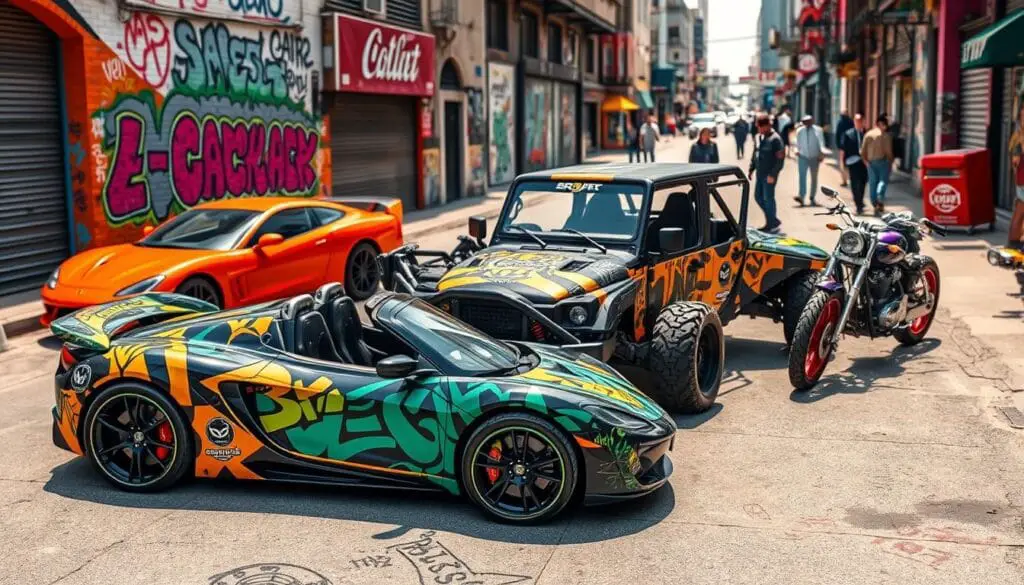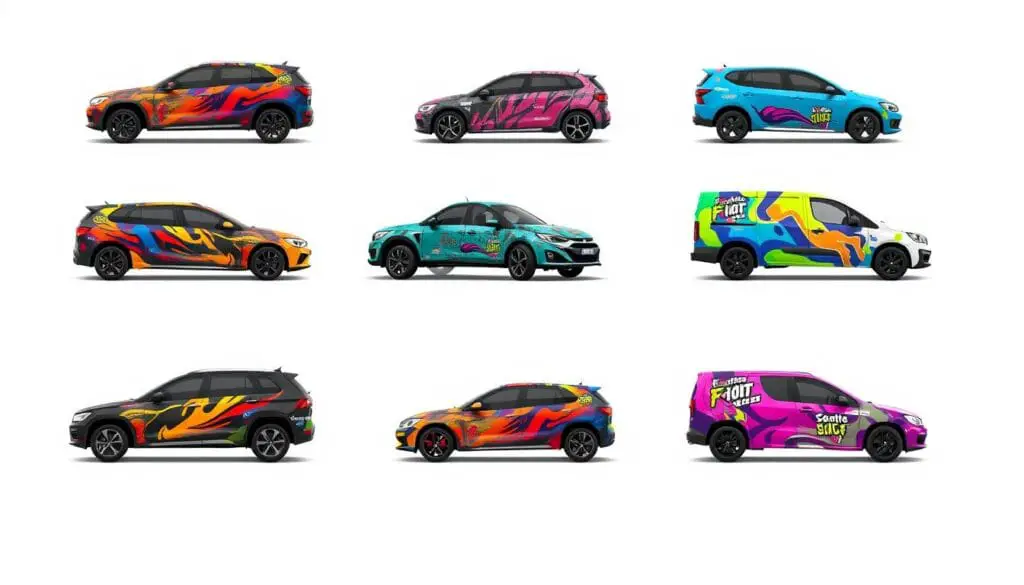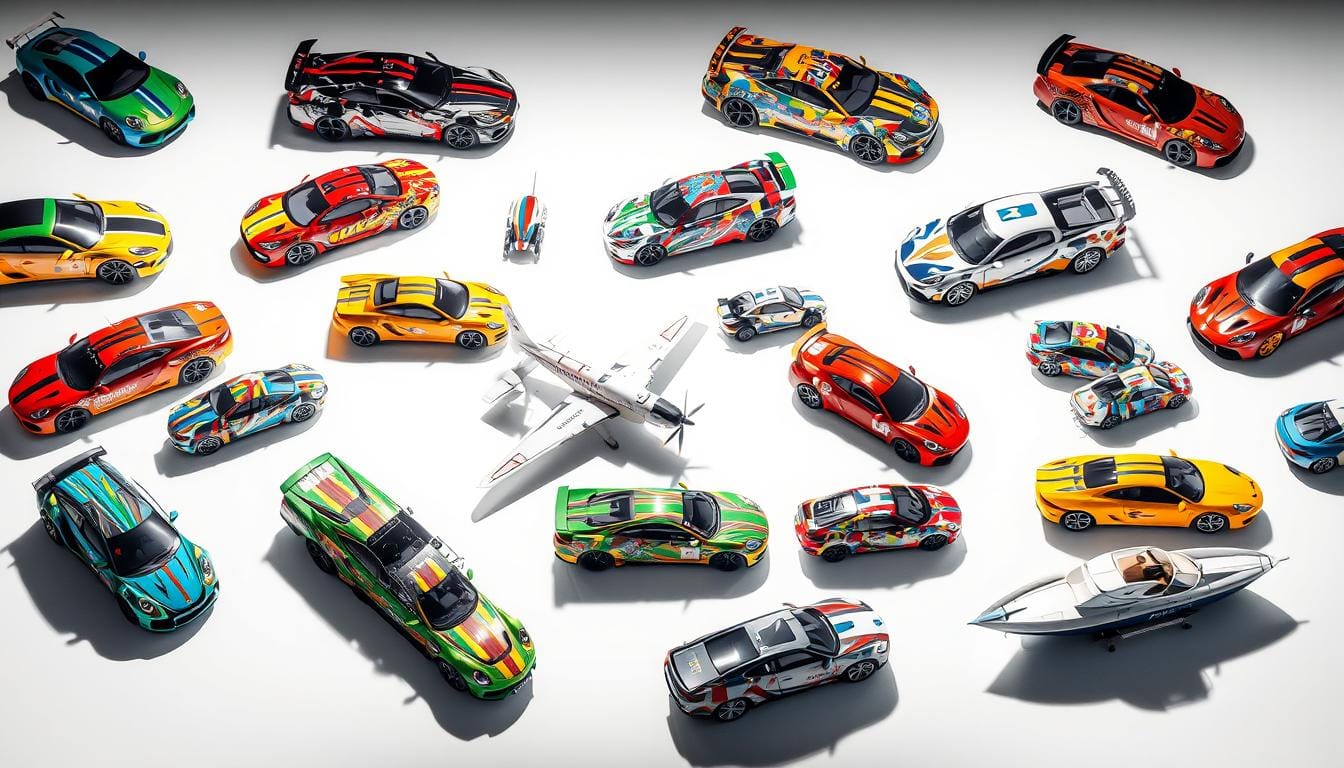Lesson 3: Creating Basic Liveries
I’ve always been drawn to the art of vehicle livery. It’s the cool graphics and patterns on cars, trucks, and planes. This art form turns ordinary vehicles into mobile art pieces, showing off a brand’s spirit or the driver’s creativity.
In this lesson, we’ll explore basic livery design. We’ll cover the key tools, techniques, and principles for making amazing vehicle graphics. This guide is for both experienced designers and newcomers. It will help you turn your car design ideas into reality.
Table of Contents
Getting Started with Livery Design Software
Starting your journey in livery design means getting to know the best livery design software and tools. This digital space is where you’ll create amazing designs for vehicles. It’s your chance to turn vehicles into works of art.
Essential Tools and Programs
The world of livery design has many graphic design tools. You’ll find everything from Adobe Photoshop and Illustrator to 3D modeling software. Choosing the right tools is key to making your designs come to life.
System Requirements for Design Software
For a smooth design process, your computer needs to be powerful. It should have lots of processing power, memory, and graphics capabilities. This setup lets you work with high-quality images and 3D models without any trouble.
Basic Interface Navigation
Get to know the interfaces of top livery design software. Learn how to use the workspace, toolbars, and main features. Knowing the basics well lets you design faster and more accurately.
| Software | Key Features | Recommended System Specs |
|---|---|---|
| Adobe Illustrator | Vector graphics, scalable illustrations, color management | Intel Core i5 or AMD Ryzen 5, 8GB RAM, 512GB SSD |
| Adobe Photoshop | Raster image editing, photo manipulation, layer-based design | Intel Core i7 or AMD Ryzen 7, 16GB RAM, 1TB SSD |
| Autodesk 3DS Max | 3D modeling, texturing, rendering, animation | Intel Xeon or AMD Threadripper, 32GB RAM, Nvidia Quadro GPU |
Learning the basics of livery design software and graphic design tools is crucial. It sets you up for creating amazing vehicle designs. With this knowledge, you’re ready to explore more about vehicle wrapping and livery design.
Understanding the Fundamentals of Vehicle Wrapping
Vehicle wrapping is a popular way to change your car or truck’s look. It’s a cost-effective and versatile method. You can change the color, add graphics, or create a unique livery.
At the heart of vehicle wrapping is high-quality vinyl films. These films come in many colors, finishes, and textures. You can make your vehicle truly unique with them.
Getting your vehicle ready for wrapping is key. It involves cleaning and degreasing the surface. Also, any imperfections must be fixed. Skilled installers use special tools to make sure the vinyl sticks well to the vehicle’s shape.
The printing tech used for wraps is also important. Brands like 3M, Avery Dennison, and Oracal make durable, UV-resistant films. These films keep their colors bright and last long, even in harsh weather.
“Vehicle wraps are a game-changer in the world of automotive customization. They allow you to transform your ride without the need for expensive paint jobs or permanent modifications.”
Whether you want to make your car look better or start a vehicle wraps business, knowing about vehicle wrapping is crucial. It opens up a world of creative options.
Creating Basic Liveries: Step-by-Step Process
Creating liveries for your virtual vehicles in Microsoft Flight Simulator (MSFS) is fun. It lets you show off your creativity and make a big impact. You’ll pick templates, learn about color theory, and follow brand guidelines. Let’s explore how to make basic liveries that look great and match your vision.
Template Selection and Setup
Choosing the right template is key to a great livery. MSFS has many vehicle models, each with its own look and size. Pick a template that fits your vehicle well for a professional look.
Color Theory and Brand Guidelines
Color is very important in livery design. It sets the mood and feels. If it’s for a brand, follow their guidelines to keep it consistent.
Working with Layers and Effects
Get creative with layers and effects in your design software. Try different textures, gradients, and overlays to make your design pop. Balance these elements to create a design that’s both cohesive and eye-catching.
“The key to creating a successful livery is to strike a balance between aesthetics and functionality. By thoughtfully combining the right templates, color palettes, and design elements, you can bring your vision to life and leave a lasting impression on the virtual aviation community.”
The livery design process takes time and effort. It might take many tries to get it right. Be open to trying new things and keep refining your designs until they’re perfect.
Mastering Digital Design Elements for Vehicles
Creating eye-catching digital designs for vehicle signage is key. You need to know the basics, like using vector graphics for logos and 3D elements for car looks. The digital graphic design world is full of ways to improve your vehicle signage and digital design skills.
Adobe Photoshop is a top tool for designers. It lets you control your designs with layers and masks. Adobe Illustrator is also crucial for making vector artwork. This keeps your logos and text sharp at any size.
Sim racing platforms have built-in livery editors with 3D previews. This lets you see your designs on cars from all sides. For detailed 3D mockups, Blender is great. Car Tuner in Assetto Corsa helps you see your designs in action.
Choosing the right file format is important. PSD keeps your design flexible, while PNG is widely compatible. A 2048×2048 pixel resolution is best for sim racing liveries. It balances detail and game performance.
Keeping up with game format needs is vital. Whether you’re making textures, 3D parts, or using advanced software, mastering digital design for vehicles opens up creative possibilities. It takes your vehicle signage and digital design to new levels.
Essential Techniques for Commercial Branding
Creating eye-catching commercial vehicle branding is all about blending your brand’s identity into the design. Every detail, from where you place your logo to the fonts you choose, matters. These elements help make your fleet branding stand out and memorable.
Logo Placement and Scaling
Where and how big your logo is on the vehicle is very important. The right spot can grab people’s attention as they see your vehicles. Try different places like the sides, front, or back to see what works best for your brand.
Typography in Vehicle Design
The fonts you pick for your branding can change how your vehicles look and feel. Choose fonts that are clear, nice to look at, and match your brand’s vibe. Make sure your company name and tagline are easy to read from far away.
Corporate Identity Integration
It’s key to make your corporate identity a part of the vehicle design. Use your brand’s colors, images, and patterns to make your fleet look consistent.
By using these key techniques, you can turn your vehicles into moving ads that show off your brand. Good commercial branding can really help your business get noticed, build trust, and improve your marketing.
Optimizing Designs for Different Vehicle Types
Vehicle customization is not a one-size-fits-all affair. Designers must tailor livery designs to fit each vehicle’s unique shape and size. This is true for cars, trucks, vans, and buses. The goal is to create a design that looks great and is cohesive.
For vehicle customization, knowing the details of each vehicle is key. What works for a small car might not fit a big van or a bus. Designers need to understand automotive design to make liveries that enhance the vehicle’s look.
In fleet branding, the challenge grows. Keeping a brand’s look consistent across different vehicles is tough. Designers use logos, colors, and design elements to tie everything together. They aim to show the brand’s unity while celebrating each vehicle’s uniqueness.
| Vehicle Type | Design Considerations | Branding Techniques |
|---|---|---|
| Cars | Compact surface area, emphasis on visual impact | Prominent logo placement, bold color schemes |
| Trucks | Larger surface area, focus on durability and readability | Strategically placed graphics, legible typography |
| Vans | Diverse shapes and sizes, integration of functional elements | Adaptable design templates, cohesive brand identity |
| Buses | Expansive canvas, opportunity for impactful visuals | Immersive, eye-catching designs, cultural relevance |
Designers who excel in vehicle customization, automotive design, and fleet branding can make any vehicle look better. They adapt their designs to fit each vehicle’s unique features. This creates a unified and striking visual experience for everyone.

Quality Control and Preview Functions
Creating a stunning livery for your vehicle is key. But, making sure your work is of high quality is just as important. In livery design, quality control and preview functions are crucial for the best results.
Common Design Mistakes to Avoid
When starting your livery design project, watch out for common mistakes. These can ruin your final product. Some common issues include:
- Poor color choices that clash or fail to complement the vehicle’s aesthetics
- Improper scaling of logos, graphics, and text, leading to a distorted or unprofessional appearance
- Insufficient image resolution, resulting in blurry or pixelated elements
- Lack of attention to detail, such as misaligned elements or inconsistent spacing
Testing and Validation Methods
To ensure your livery design is top-notch, use thorough design validation methods. This includes:
- Digital previews: Use software tools to create digital renders of your design. This lets you check the look and make changes before production.
- Physical prototypes: Make physical mockups or small models to check if your design works. This helps spot any problems.
- Feedback and testing: Get feedback from peers, experts, or potential customers. This helps improve your design based on their input.
By adding quality control and preview functions to your livery design process, you can improve your work. This ensures a polished, professional, and eye-catching final product.
Exporting and Sharing Your Livery Designs
When you’re almost done with your livery design, think about how you’ll share it. Picking the right file formats and ways to work together can really help. It makes your work flow better and gets your designs noticed.
Exporting for Various File Formats
It’s important to think about what your clients or team needs when you export your designs. The industry often uses:
- Vector-based files like SVG or AI, which keep your designs flexible and editable.
- Raster-based files such as PNG or JPEG, perfect for showing off your work online.
- Specialized livery templates for games, making sure your designs fit right in.
Know what your target platforms or clients need. This helps you pick the best file formats for your project.
Design Collaboration and Sharing
Working well together is crucial in livery design. Use online design platforms or cloud tools for easy feedback, version control, and sharing. This makes getting your designs approved faster and more smoothly.
Also, make livery templates that are easy to change and share. This saves time and keeps your designs consistent across projects. It helps your brand look good everywhere.

Learning how to share your livery designs well can improve your workflow. It helps you build better relationships with clients and boosts your reputation as a livery design expert.
Conclusion
This guide has shown you the basics of creating liveries for vehicles. You now know how to design and customize cars. You’ve learned the essential tools and techniques for vehicle wrapping.
Creating basic liveries, designing vehicles, and customizing cars is a journey. It’s important to keep learning and practicing. This will help you improve your skills and create unique designs.
Be inspired by Formula 1’s liveries and their role in branding. Use what you’ve learned to explore new possibilities in vehicle customization. Let your passion for design show in every project you do.

